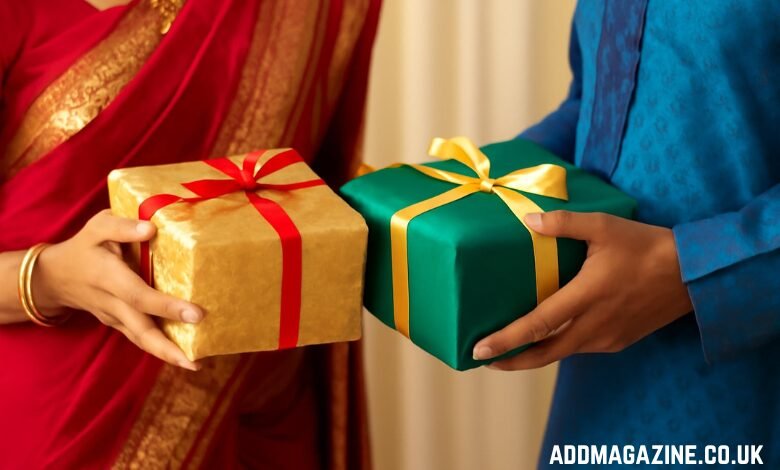Gelboodu is a term deeply ingrained in the cultural fabric of the Indian subcontinent, particularly in South Indian communities. It represents more than just a practice; it is a reflection of traditional customs, family bonds, and social harmony. While the exact origins of Gelboodu remain somewhat obscure, its roots in social practices and its evolution through history are noteworthy.
This article seeks to explore the meaning, history, and significance of Gelboodu, tracing its development from its humble beginnings to its role in modern-day communities. The practice’s transition from a local ritual to a widely recognized tradition across various regions demonstrates the importance of cultural continuity in an ever-changing society.
What is Gelboodu?
At its core, Gelboodu refers to a customary exchange of goods, gifts, or services between families, typically during significant life events, such as weddings or community celebrations. This practice is predominantly found in regions of South India, particularly among families speaking languages like Kannada, Telugu, and Tamil. While its form may differ from region to region, its central principle remains the same: it is a ritualistic exchange that symbolizes goodwill, respect, and social connection.
Though Gelboodu can be viewed as a gift exchange, it is much more than a transactional activity. In many ways, it is an expression of mutual respect and a reflection of the interconnectedness of community life. The tradition carries significant weight in the marriage rituals of many families, especially in rural and semi-urban areas where such customs are still widely practiced.
The Origins of Gelboodu
The precise date or year marking the beginning of Gelboodu as a practice is unclear. However, it is believed to have emerged several centuries ago, during a time when village life and community cohesion were central to social structures. In rural South India, where people lived in tight-knit communities, customs like Gelboodu were crucial for maintaining relationships and ensuring social harmony.
As a practice, Gelboodu has roots in the traditional Indian family systems, where marriage was seen as a bond not only between two individuals but also between two families. In the past, family alliances were of utmost importance, and the exchange of goods during weddings symbolized this union.
It is likely that Gelboodu began as a modest exchange, with foodstuffs, clothing, or simple household items being exchanged between the bride and groom’s families. Over time, as wealth accumulated in certain regions, these exchanges grew more elaborate, sometimes involving jewelry, money, or more expensive goods.
Historically, the practice of Gelboodu began in the medieval period (around the 12th century) but became more widespread by the 17th century, coinciding with the rise of regional kingdoms and an increase in trade. This period saw the intersection of social customs with growing wealth and the desire for families to show their status through such exchanges.
Key Milestones in the Evolution of Gelboodu
12th Century – Emergence of Customary Gift Exchanges
Gelboodu, like many other cultural practices in India, likely originated in the 12th century, when social structures were being formalized in rural communities. This period saw a growing importance of familial ties and the increasing prominence of community-based rituals. Although it began as a simple exchange of goods during weddings or festivals, it set the groundwork for future developments.
17th Century – Formalization of Gelboodu Rituals
By the 17th century, Gelboodu had become a formalized part of marriage rituals. As families in the southern parts of India began accumulating more wealth, they used these exchanges to reinforce the social status of the families involved. This period saw more elaborate items, like jewels and property, being exchanged as part of Gelboodu, reflecting the increased social and economic complexities of the time.
19th Century – Widespread Adoption
By the 19th century, Gelboodu had become a widespread custom practiced in many South Indian regions. The exchange began to symbolize kinship, with families reinforcing relationships through these ritualistic exchanges. It also began to be associated with community festivals and other significant milestones beyond weddings, such as birthdays or housewarming ceremonies.
Mid-20th Century – Modern Adaptations
The 20th century saw rapid changes in Indian society, especially following independence in 1947. With the advent of modern transportation, economic growth, and urbanization, many traditions, including Gelboodu, began to evolve. Urbanization led to changes in the way gifts were exchanged – money, gift cards, or even charitable donations replaced physical goods in many cases. The formality of the rituals also changed, with family gatherings becoming smaller and less elaborate.
Late 20th Century to Present – Digital Transition
As India entered the digital era in the late 20th century, particularly after the 1990s, Gelboodu began to adapt to the needs of a more globalized society. The rise of online platforms, e-commerce, and social media introduced new ways of gifting. While rural areas continue to follow the traditional methods of gift exchange, urban and tech-savvy communities have incorporated virtual gift exchanges into the practice. Online money transfers and virtual gifting have become a part of modern-day Gelboodu.
Key Facts about Gelboodu
- Cultural Significance: Gelboodu is seen as a way of building relationships. It strengthens family bonds, increases social interaction, and ensures that individuals remain connected to their cultural and family roots.
- Role in Marital Customs: The tradition is especially prominent in marriage rituals, where the exchange is seen as an integral part of the wedding ceremony. It symbolizes the mutual respect between the bride’s and groom’s families.
- Gift Exchange: The actual items exchanged in Gelboodu can vary widely from region to region. While traditional items like jewelry, clothing, or home goods are common, modern-day practices might see the exchange of money or gift cards.
- Rural and Urban Divide: While Gelboodu is deeply rooted in rural traditions, it has been modified or adapted in urban areas. In some urban areas, it’s less about ceremonial exchanges and more about social gatherings or family celebrations.
- Symbol of Status: In some cases, the value of the exchange plays a role in defining social status. Larger, more elaborate exchanges can sometimes be seen as a way to show wealth or prestige in the community.
Gelboodu’s Role in Modern Indian Society
In today’s world, Gelboodu has become an integral part of many cultural and familial practices, especially in rural and semi-urban regions. While urbanization has caused some shifts in the way Gelboodu is practiced, the core values of community solidarity and kinship remain unchanged.
In rural areas, Gelboodu is still regarded as an essential ritual. It is a way for families to demonstrate their respect and affection for each other, as well as a way to show gratitude for the bond formed through marriage or other significant events. In these regions, it is often practiced with great reverence, and the items exchanged are still largely tangible goods—jewelry, food, or home decor.
In urban centers, where fast-paced lifestyles dominate, Gelboodu has seen a shift in form. The exchange may now involve financial transactions, gift cards, or online transfers, but the intent remains largely the same. Families continue to use this practice to strengthen bonds and show respect, even if the goods exchanged are no longer as tangible as before.
The Significance of Gelboodu
Gelboodu carries great cultural and social significance, both historically and in the present day. The custom is deeply embedded in South Indian culture, reflecting family values and community ties. It also serves as a reminder of the importance of tradition, even in an era dominated by modern conveniences.
The exchange itself is a symbolic gesture—not just a material one. The act of gifting represents the strengthening of family bonds, an expression of love, and an affirmation of respect. For many families, Gelboodu is more than just a practice; it is a ritual of reaffirmation, which helps individuals and families maintain their connection to their heritage.
Conclusion
Gelboodu, a tradition with roots tracing back to the 12th century, has evolved significantly over the centuries. From its early days as a modest gift exchange to its role in modern-day life, it continues to serve as a powerful symbol of familial ties and cultural continuity. Whether in the form of traditional gifts or modern monetary exchanges, Gelboodu remains a cornerstone of social life in many South Indian communities.
As we move further into the digital age, the practice of Gelboodu will undoubtedly continue to evolve. However, its core purpose—strengthening relationships and maintaining community connections—will likely remain unchanged for generations to come.



